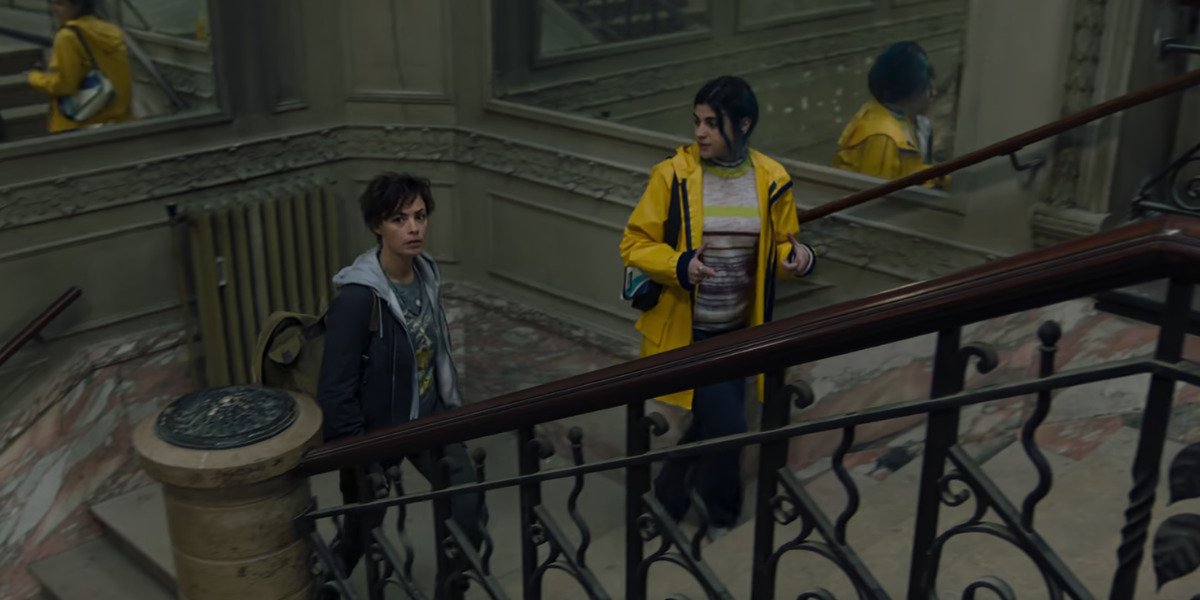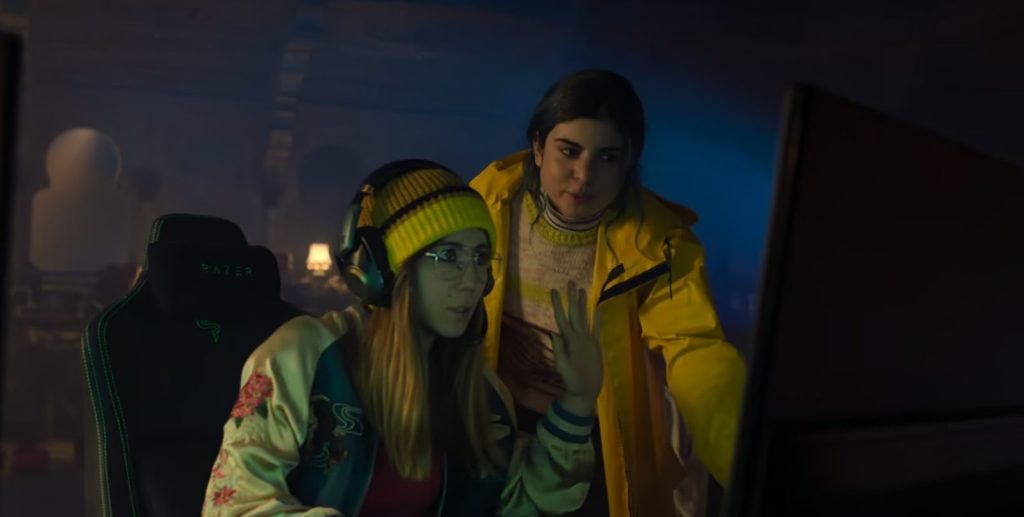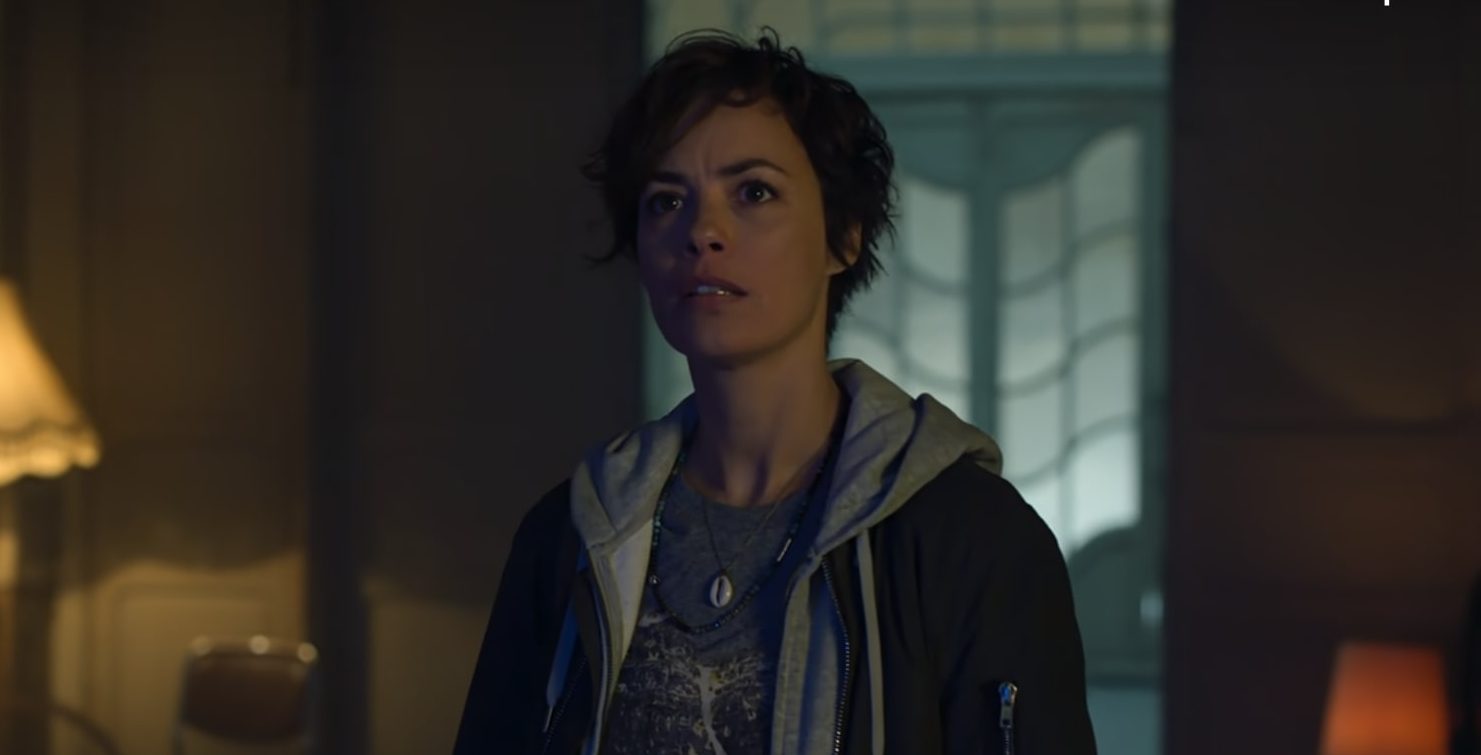In ‘Under Paris,’ directed by Xavier Gens, the narrative follows two climate activists who attempt to avoid disaster when a massive female shark starts hunting in Paris’ River Seine days before a Triathlon competition. The protagonist, Sophia, is an environmentalist who lost her entire crew to a shark attack, while Mika is an activist who runs the SOS, Save Our Seas, program. As the time to stop the shark, Lilith, from wreaking havoc runs out, the pair become desperate to salvage the situation and protect unwitting Parisians who are about to swim in the waters.
Thus, the film exposes the viewers to the implications of environmental degradation and pollution through an ecological horror narrative. Sophia, Mika, and the SOS programs are pivotal influences on the same themes, becoming faces for the conversation surrounding water pollution and its consequences. As such, their storylines pose the question: how rooted are the characters in reality?
Sophia and Mika: Faces of the Fictional Tale’s Climate Activism
Sophia and Mika are not real climate activists or environmentalists. ‘Under Paris’ fictionalizes these characters to focus the narrative solely on the environmental aspects of the shark horror. The story equips the iconography and cultural perception of sharks as a metaphor for the potential adverse consequences of environmental pollution. Therefore, Sophia and Mika’s presence within the tale as experts in the conversation remains instrumental to the story’s plot progression. Furthermore, their inclusion allows space for natural explanations of practical instances, such as Lilith’s behavioral pattern as it migrates from the open seas and oceans to a small clogged river channel in the Parisian city. For the same reason, both women’s connection to the climate and the environment gives them a unique insight that defines their roles.

It is also important to note that the narrative places the two environmentalists in quiet opposition to the local authorities. The police chief and the mayor wish to sweep the matter under the rug discreetly or not take it seriously. However, Sophia and Mika understand the gravity of such a situation well, having devoted their whole life to it. Even though the fictional climate activists may not be real, one can find references for their characters in real-life climate activists like Liz Parkinson. The diver, environmentalist, and shark conservationist is every bit as devoted to preserving maritime life, particularly sharks, through her promotion efforts and various environmental projects.
So, while the environmentalists may have fictionalized origins, their efforts and work are reflected in reality through people like Liz, who are determined to protect the ocean from global warming and have an affinity for sharks from a very young age. The UK diver who grew up in South Africa and then moved to America to pursue a diving career runs campaigns like Save the Sharks and Save the Seas to raise awareness about shark preservation by teaching kids how to swim. This multitude of factors may have influenced Sophia and Mika’s inception in ‘Under Paris.’ Nevertheless, since no tangible ties can be drawn to either character and a real-life individual, they remain confined to the ecological horror story as fictional characters.
SOS is a Fictional Environmental Organization
Similar to the environmentalists depicted in ‘Under Paris,’ The Save Our Seas organization is a fictionalized element within the story. Although Save Our Seas is an actual ocean preservation foundation that was founded in 2003, the one depicted in the film drastically diverges from the real-life organization. When Mika welcomes Sophia into the halls of the on-screen SOS, the operation has a discerning underground nature. Their headquarters in Paris is stocked with several ocean preservationists working in a somewhat shabby building in casual conditions. Such a portrayal fits in tandem with the film’s depiction of climate activists who are constantly on the back foot against the local and government authorities.

While a similar tension exists in reality, the Save Our Seas Foundation presents a much different image. The real-life foundation has been around for much longer than the one depicted in the tale. They were established in 2003 in Geneva, Switzerland, and focus on protecting all ocean life. Still, like their ‘Under Paris’ counterpart, they also specialize in preserving shark life as human activities endanger it. The foundation promotes its goal and objective for a safer and cleaner ocean through four driving principles: research, education, awareness, and conservation. They are a major stakeholder in the survival of ocean life, and their overall contribution to research has led to the financial backing of 150 marine-based projects around the globe.
Thus, the disparity between the underground SOS operation shown in ‘Under Paris’ and the real-life foundation becomes evident. The former has no bearing on the sophistication and reach wielded by the real SOS, even though their motivations, approach, and working method may converge at points. Additionally, the name Save Our Seas was also used in a legislative law from 2018. The Save Our Seas Act 2.0 focuses on protecting marine life by prioritizing efforts to stop debris and plastic waste from being pumped into the oceans. As a result, the SOS organization run by Mika sustains relevance to numerous real-life sources. Yet, in fulfilling disaster movie conventions, the on-screen SOS’s portrayal within ‘Under Paris’ deviates from any actual organization, rendering it fictitious.
Read more: Under Paris Ending, Explained


You must be logged in to post a comment.